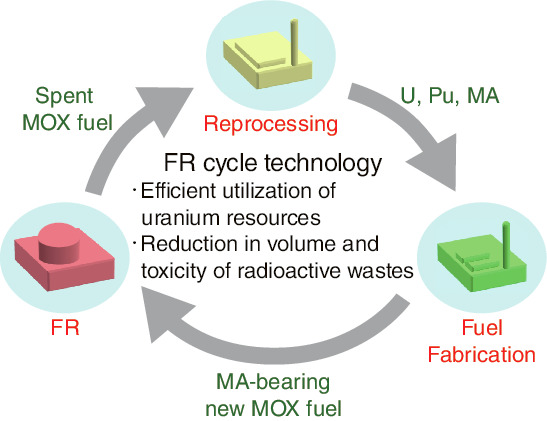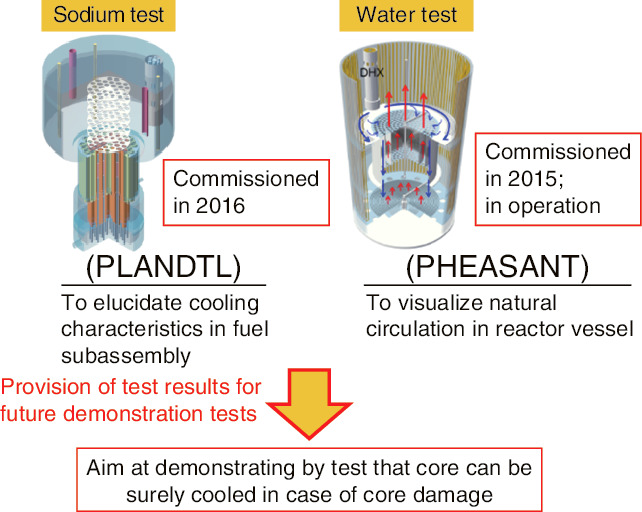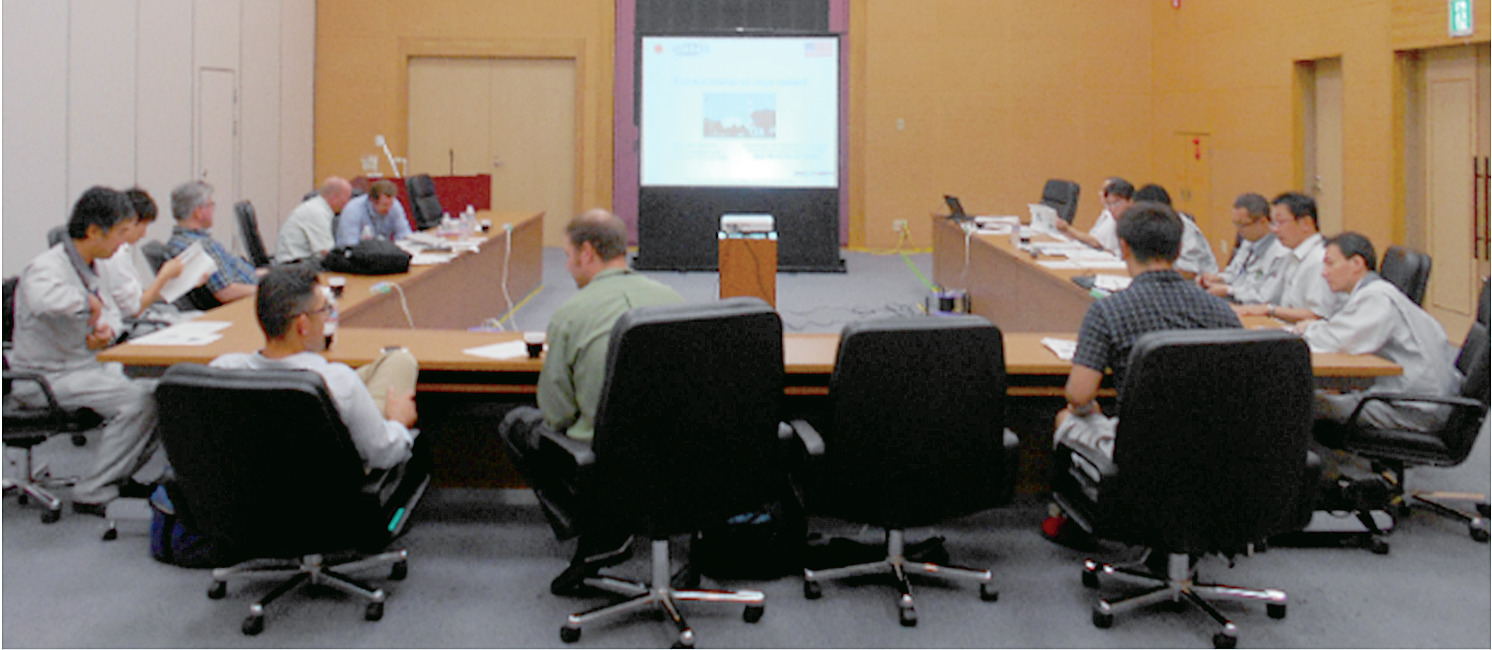
Fig.7-1 Fast reactor cycle technology

Fig.7-2 Example of research and development (R&D) activity for severe accident measures

Fig.7-3 International cooperation in FR cycle development
Fast reactor (FR) cycle technology, as shown in Fig.7-1, is an innovative technology with the potential to dramatically enhance the utilization efficiency of uranium resources, as is required for the long-term use of nuclear energy. We are aiming to innovate in numerous ways to make FR cycle technology acceptable to society. The FR cycle technology must be able to maximally reduce the risk of nuclear disasters such as that at the TEPCO’s Fukushima Daiichi NPS, which released large amounts of radioactive substances. For this purpose, we will create a safety enhancement concept that incorporates measures to prevent severe accidents and mitigate the impact in the design on the wide assumption of causes leading to severe accidents, including natural disasters.
FR cycle technology is capable of drastically shortening the period required to sufficiently reduce the radiotoxicity of high-level radioactive waste by partitioning long-lived nuclides when reprocessing, shortening the lifetime of the nuclides by transmutation in an FR. For that reason, we aim at innovation in nuclear energy systems by developing a technology for partitioning and transmutation of Minor Actinides (MAs) from long-lived nuclides in the FR cycle.
In FY2016, we conducted an international standardization of the safety design criteria of FRs in the Generation IV International Forum (GIF) framework and experimental studies on severe accident measures which should be incorporated into design (Fig.7-2), etc. Furthermore, in collaboration with France, we conducted joint design and evaluation of ASTRID (Advanced Sodium Technological Reactor for Industrial Demonstration), which is being developed in France; we also conducted information exchange, analysis code development, planning of testing, etc. on reactor technology, safety, and fuel as part of the ASTRID research and development (R&D) cooperation. In the fields of fuel reprocessing and fuel fabrication technology, basic technology development and small-scale MA cycle tests (SmART Cycle research), etc. were conducted.
This chapter presents the following R&D activities toward an enhanced FR safety concept. We proposed a method of evaluating leaks prior to breaking of FR pipes to sophisticate structural integrity evaluation technology for FRs (Topic 7-1). To develop a thermal-hydraulic evaluation method, we built a three-dimensional simulation model and compared its analysis results with experimental results (Topic 7-2). In the field of maintenance and repair technology for sodium-cooled FRs, the development of inspection technology for structures immersed in opaque sodium was carried out using ultrasonic waves (Topic 7-3). Using data from natural circulation tests with the Prototype Fast Breeder Reactor Monju, validation of an analytical model of the core region was performed in terms of thermal hydraulics when the core was cooled by the natural circulation of sodium after a shut-down (Topic 7-4).
Towards the development of a reprocessing technology for FR fuel, sludge cleaning method in a centrifugal contactor was developed, pursuing sophistication in the process of separating and recovering nuclear materials (Topic 7-5).
We are engaged in bilateral cooperation, mainly with the United States and France, as well as multilateral cooperation such as GIF in order to conduct the R&D on FR cycle technology effectively and efficiently (Fig.7-3). In addition, we are making efforts to develop base technologies and human resources in cooperation with universities and research institutions.